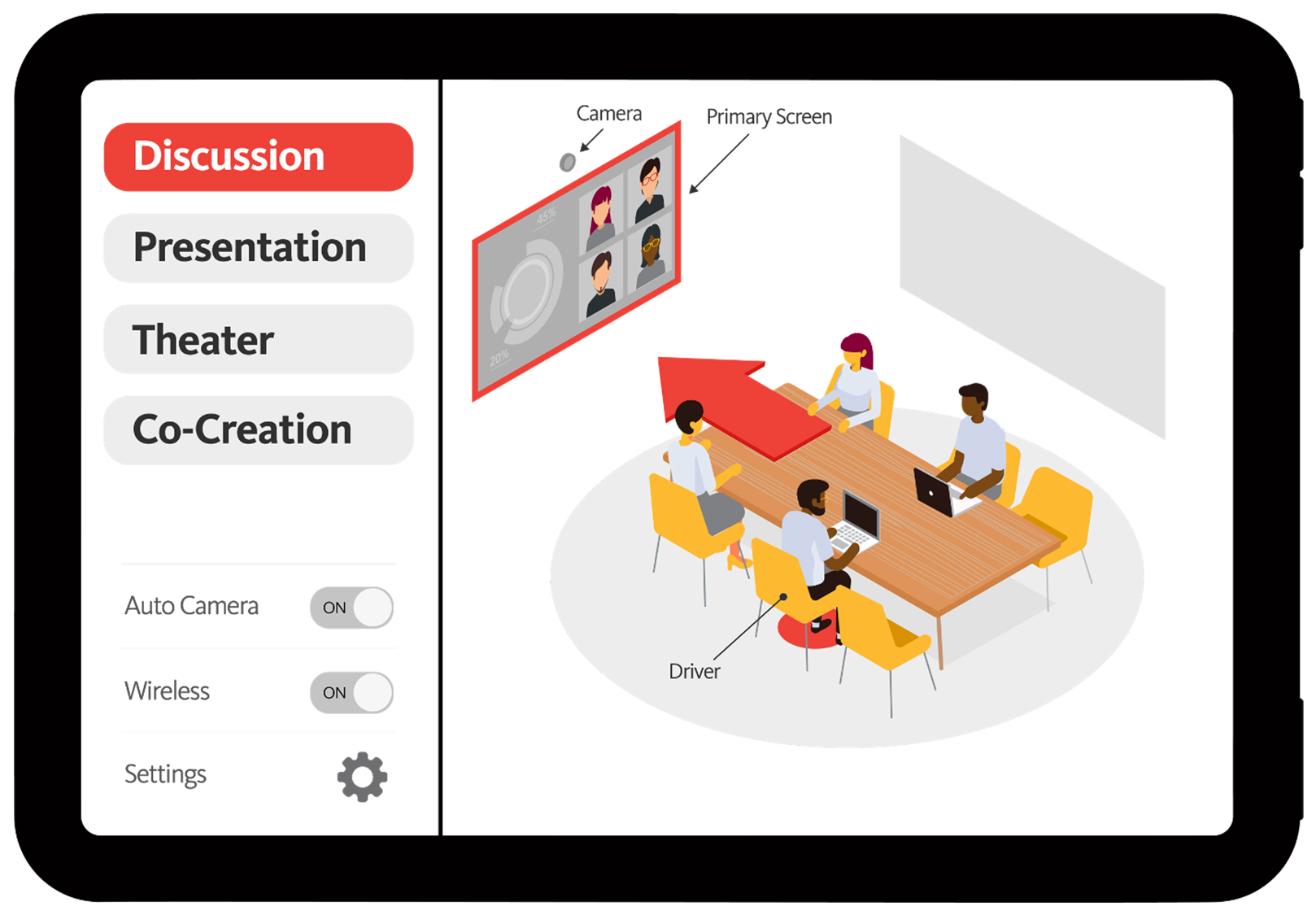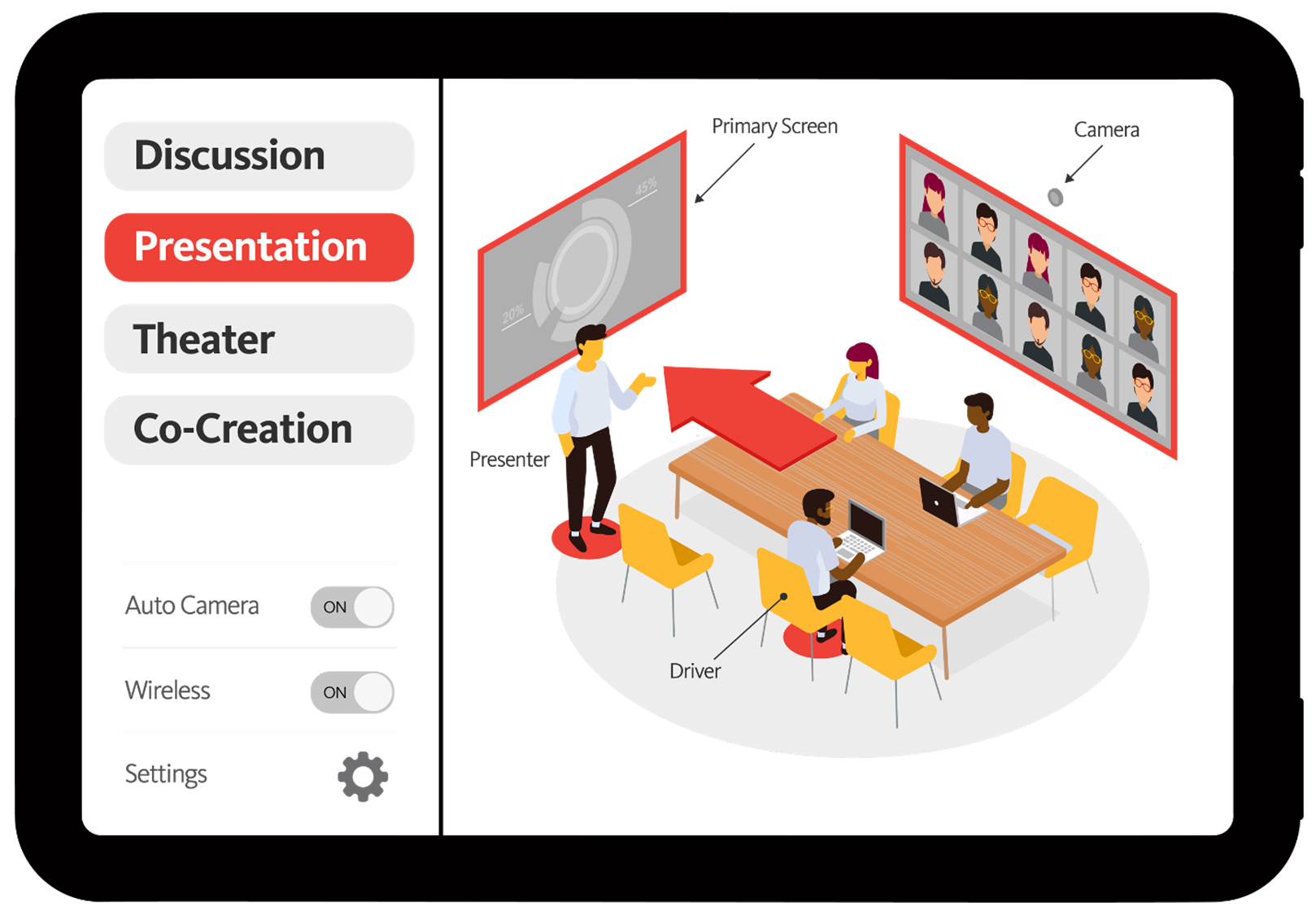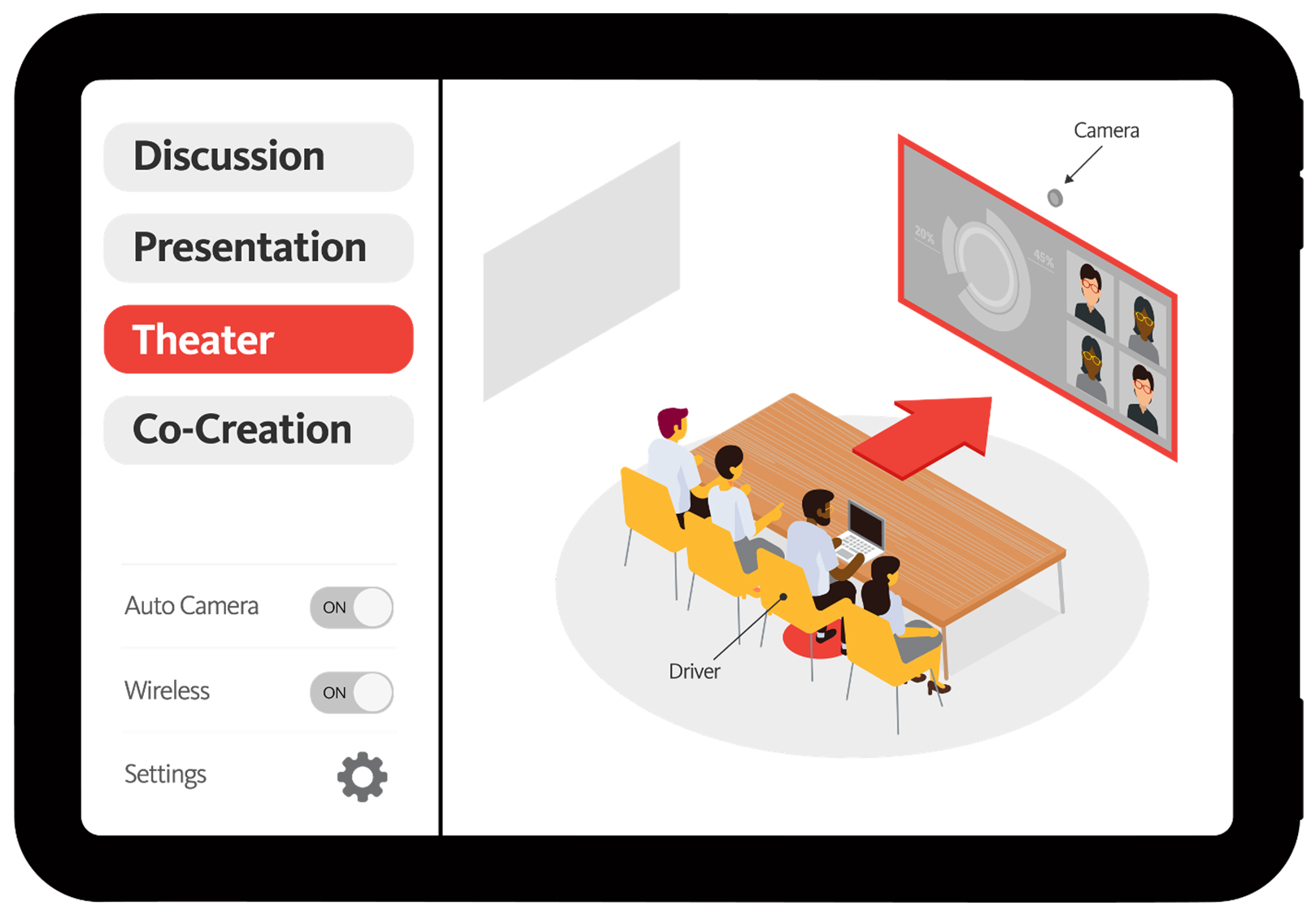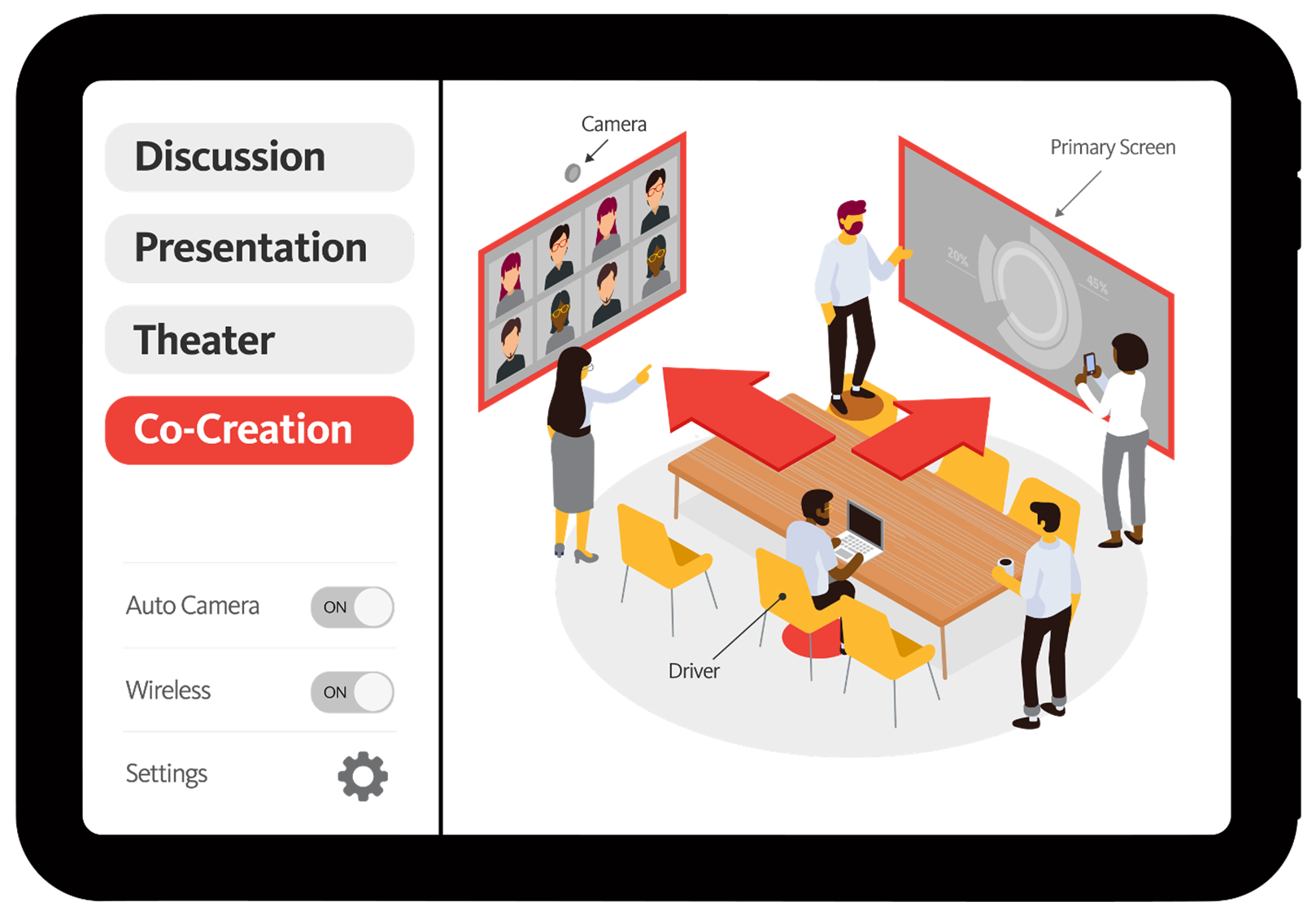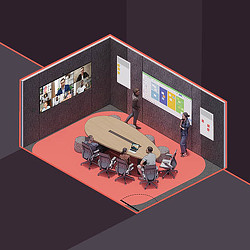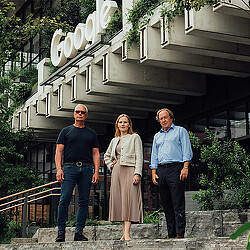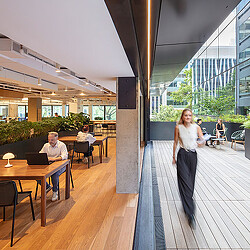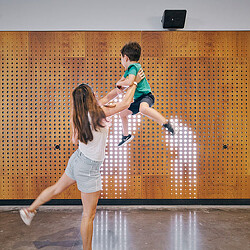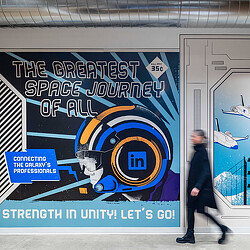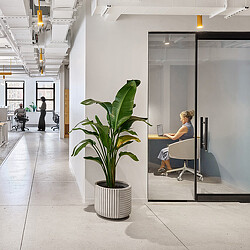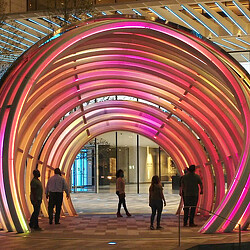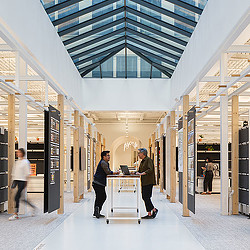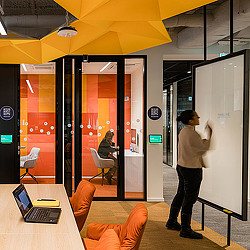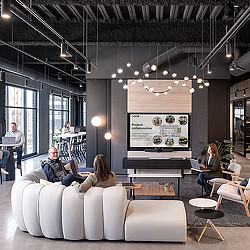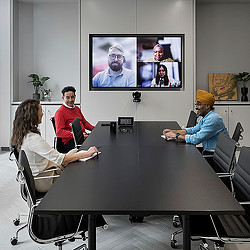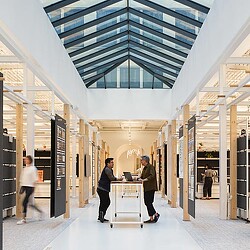How the Tech-Enabled Workplace Can Create Better Hybrid Experiences
How can we design workspaces that benefit everyone, regardless of whether they have a seat at the conference room table?
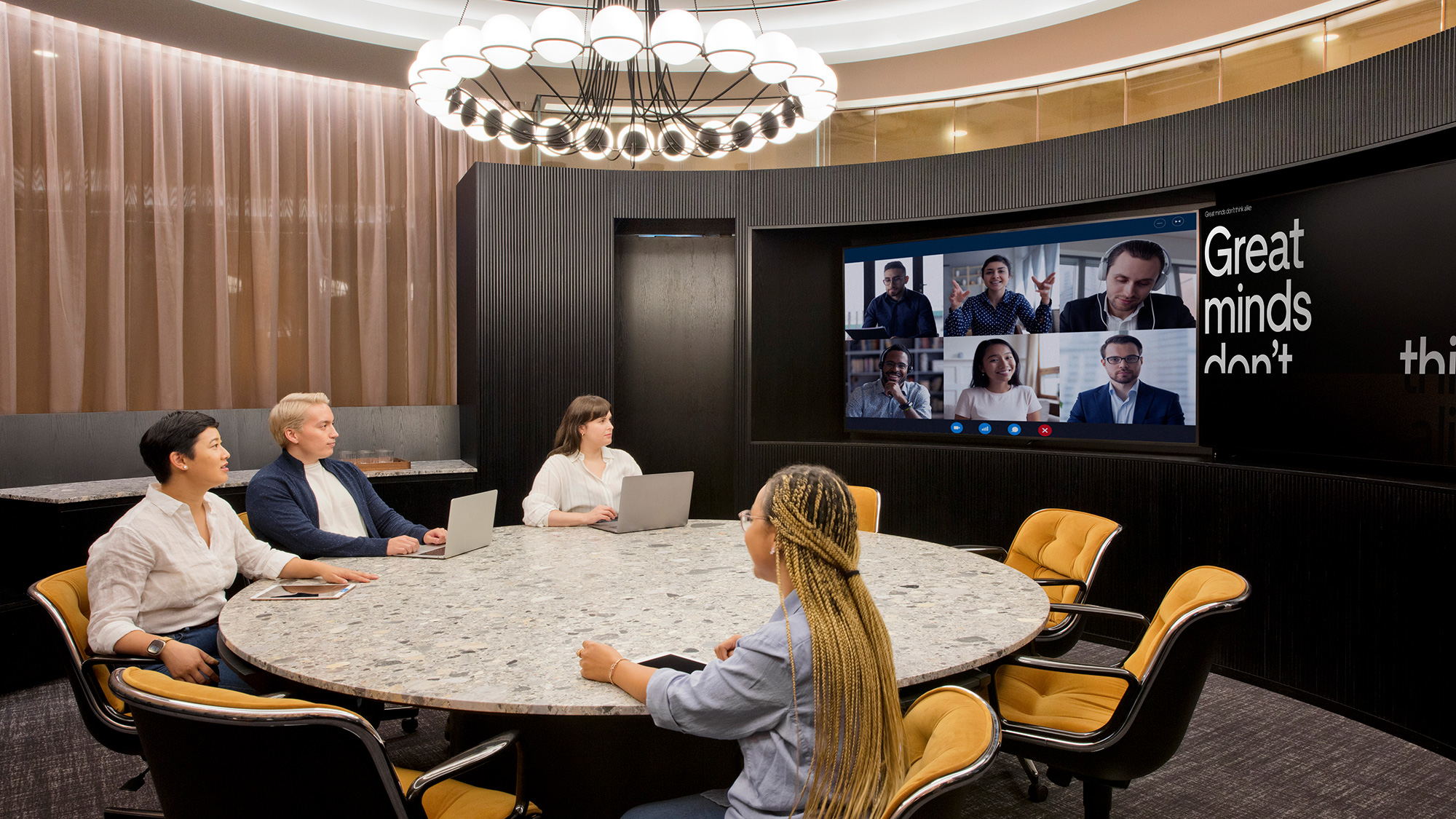
In film, the way that dialogues are shot and edited can make or break a scene. Engrossing conversations can transfix or confuse, depending on how you, as the audience, are witnessing the scene unfold. The same is true of how we view and engage with content in virtual calls, and conference set-ups. Too often, conference room configurations create unbalanced and unequal experiences for those in the room, and those on the screen who are dialing in remotely.
The disconnect between what is so intuitive and seamless as viewers of film and TV, and the clunkiness of being participants in hybrid conversations, is an area that we have been researching and designing to remove. Our workplace designers and digital design strategists aim to improve participation, productivity, and equity by treating our meeting spaces as supporting actors in the “scenes” we create for hybrid workspaces.
Building on the research that Gensler conducted on Equity in Hybrid Conferencing, we’ve expanded and realized our vision for how we can better design meeting spaces to meet the different needs of on-premises and remote participants. To achieve successful and long-lasting results, the design must integrate experience strategy and technology upstream in the process, and account for change management protocols to ensure new modes of engaging with space can be adopted and habituated for long-term impact.
For many organizations, it’s not reasonable to expect that an entire staff can always be in the same office at the same time. Designing for the “future of the workplace” must enable this kind of distributed collaboration, not just for the practical realities of a dispersed workforce but also for inclusivity and neurodiversity. It’s high time we abandon the term “hybrid work” and see it for what it is: simply, “work.”
So how can we embrace the future of work with spaces that offer value and benefit for everyone, regardless of whether they have a seat at the conference room table? The solution, as we see it, is in the integration and intersection of space, technology, and behavior.
Addressing the problem of disembodiment
Current audio-visual configurations in meeting rooms have led to an engagement problem: camera set-ups are either too high, where those in the room appear to be lording over the camera, or too low, where they become tiny figures among pencil cups and tissue boxes. Camera companies have also presented new technologies that place the camera at the center of the table, ensuring that the faces of everyone around the table are captured, but no one looks at the camera, creating a sense that those in the room are always looking around or over those who are virtually participating. We don’t lay at the center of the table in conversations, why position ourselves that way virtually?
New combination set-ups, with cameras on the wall and on tables, lends to a similarly chaotic and awkward scene that shifts from squaring up directly on speakers to a wide shot of everyone at the table.
We want people who are in the room to truly benefit from the space and we want people who are not the room to witness and influence the dynamic. Giving context is key to solving the problem of disembodiment.
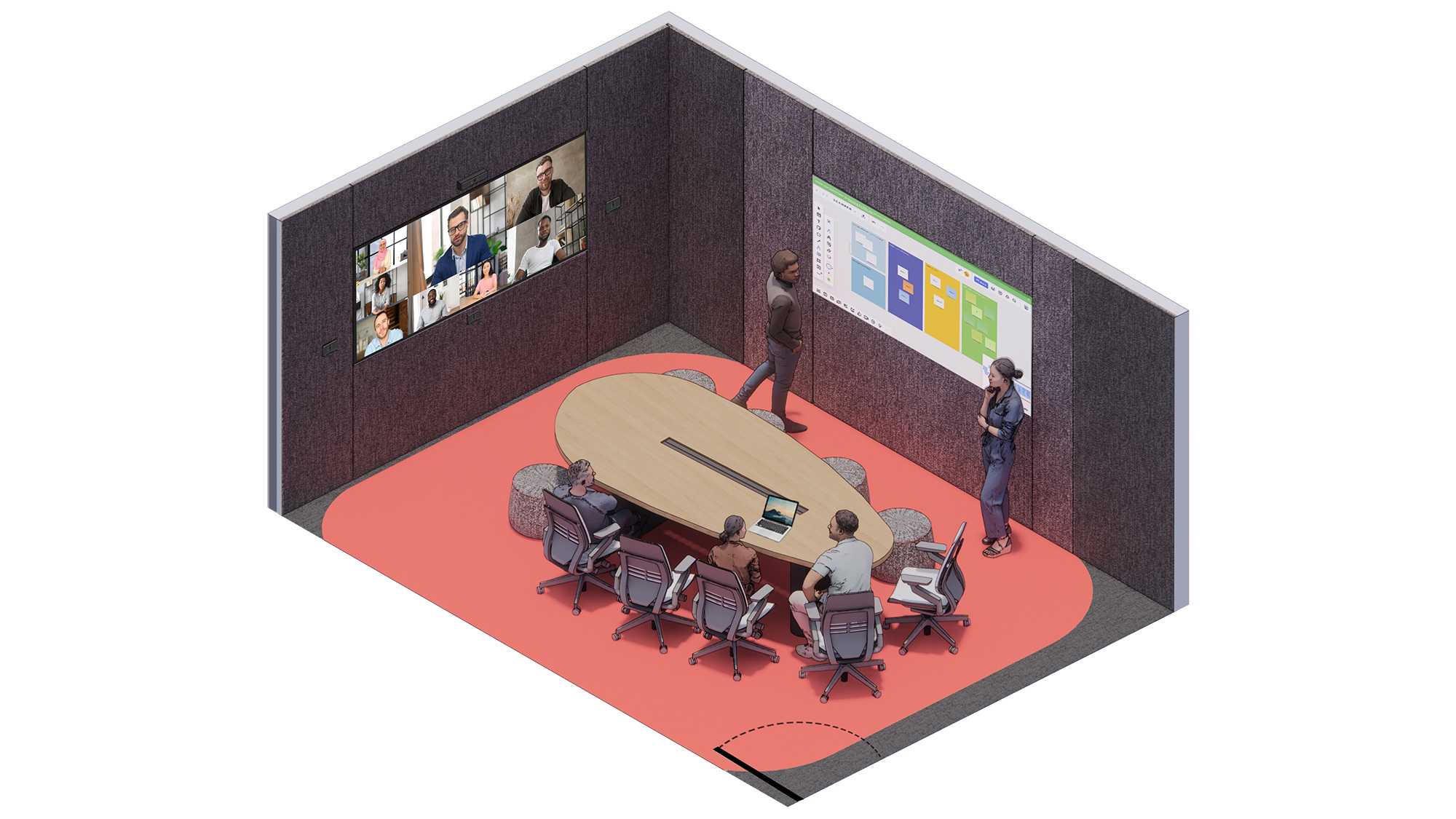
So, how can we solve for the lack of context currently plaguing digital-physical collaborative environments? By using the tried and tested methods of shooting dialogue like it’s done in TV and film, we can provide spatial awareness of who is talking to who, not just capturing faces of those speaking in the moment.
Embodiments and context are key for a good experience. In film, this is aided by not “breaking the line,” or staying on one side of a 180-degree arc so that audiences can have a consistent sense of where people are in a space. Over the shoulder shots and cross-shots also provide context and give a sense of spatial awareness.
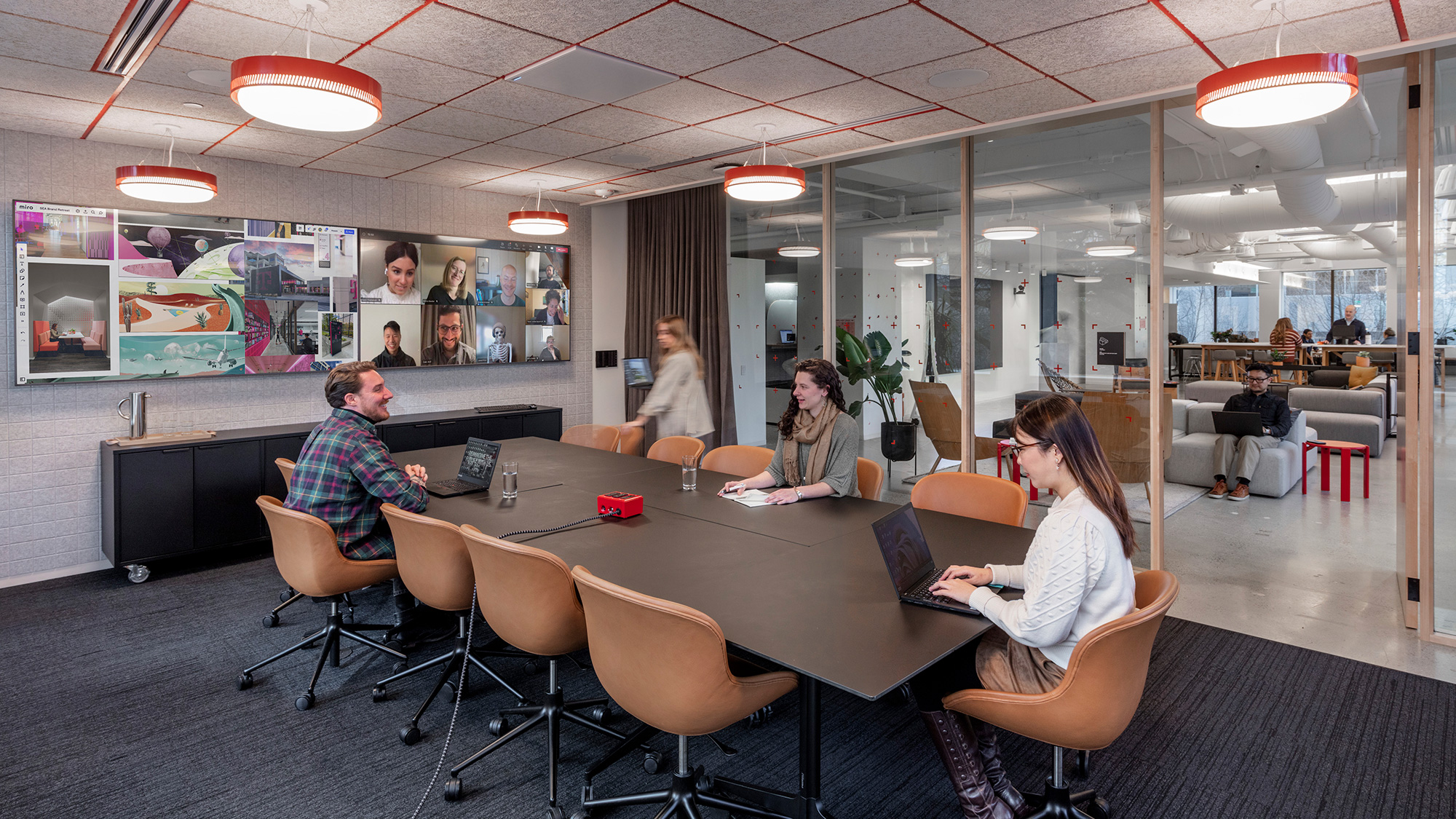
Technical setups that truly cater to the unique needs and experiences of those onsite and those participating virtually give those who aren’t physically present the ability to understand the relational contexts of those speaking to each other in the room and the surfaces or materials that they are looking at, like a whiteboard. Creating this type of studio experience for the room, complete with better cameras and better audio equipment, and shooting the action rather than the faces, can lead to better results, more fluid and natural collaboration, and rewarding digital-physical interactivity.
Forget Small, Medium, and Large Conference Rooms, and Design for the Experience Therein
Traditionally, digital experiences for conference or meeting rooms have been based on the constraints of room sizes. What if we reject that notion? What if we instead design for the mode of work that can best be served in each room? In our research, we found most meeting activities fit in one or several of these categories, or “work modes”:
- Conversational: One-on-one chats or team huddles with minimal content engagement beyond the dialogue
- Presentation: Presenter-focused pitch or share-out with a person or persons in front of the room as the focal point
- Discussion with a Reference: Critique or review, shared viewing of a piece of content referenced by the group
- Co-Creation: Work session or creative brainstorm requiring full engagement by participants through collaboration tools
The fourth category, co-creation, is the one that our clients most often seek out our help or advice to facilitate better hybrid experiences, and with good reason; it’s the most complex work mode to solve for.
In Gensler’s San Francisco office, we developed the technology to adapt to each of these different modes needed for different types of meetings, meaning that users can activate presentation mode or co-creation mode to shift the dynamics of the camera and the placement of virtual participants. The rooms change their behaviors based on the needs and programs operating therein.
Rather than placing users in the position of becoming camera operators, the room and its technology can be arranged to suit the outcome desired for the meeting. If we think about meeting spaces not as “small huddle room” or “big conference room” but rather as co-creation venues or presentation spaces, we can distinguish them and their technology integrations for greater impact and longevity.
Designing for Predictability
Fundamentally, designing a space that successfully acts as a supporting actor or as a “studio” must be easy to understand how it is functioning and how it works. Participants, virtually and in-person, should know where the shots are coming from and anticipate a recognizable experience, contrary to the dizzying and distracting experience of camera setups that frequently pan, zoom, and tilt. Planning the audio and visual integrations to account for which shots will look the best with the interior design — plants, chairs, art — and including that essential sense of place in the “shot list” created for the system allows us to drive experiences that don’t exclude any part of the room and that better drive telemetry for more predictable and seamless transitions between participants.
Too often, technology integrations are considered at the end of the process, whereas considering work modes at the beginning of the design cycle — and implementing technology solutions that are uniquely tailored to the type of activities relevant to your company — can be a great asset to remote and in-office employees. Facilitating co-creation with better spatial technology design might itself be an “experience multiplier” for the workplace of the future.
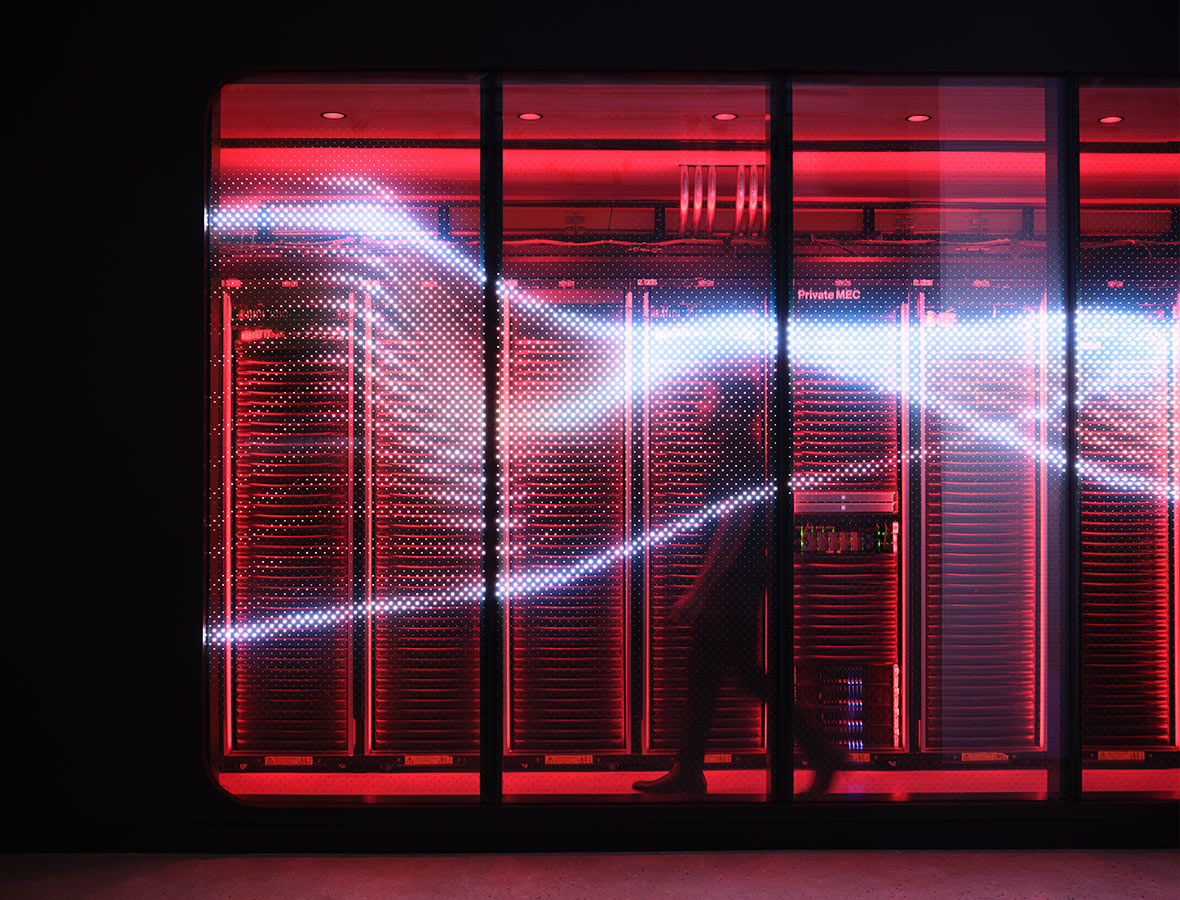
For media inquiries, email .
